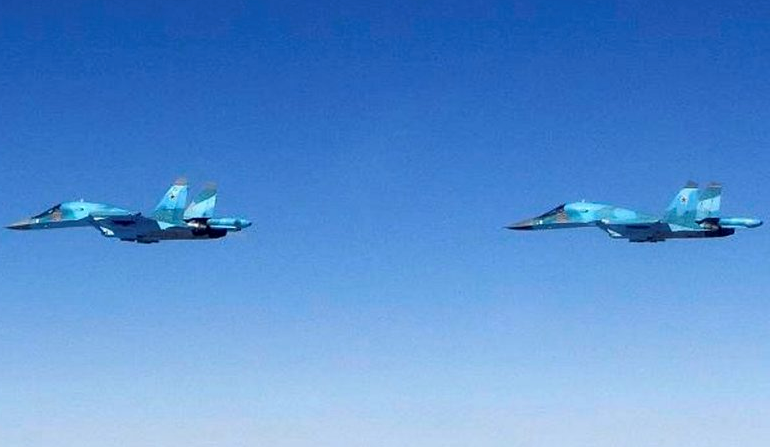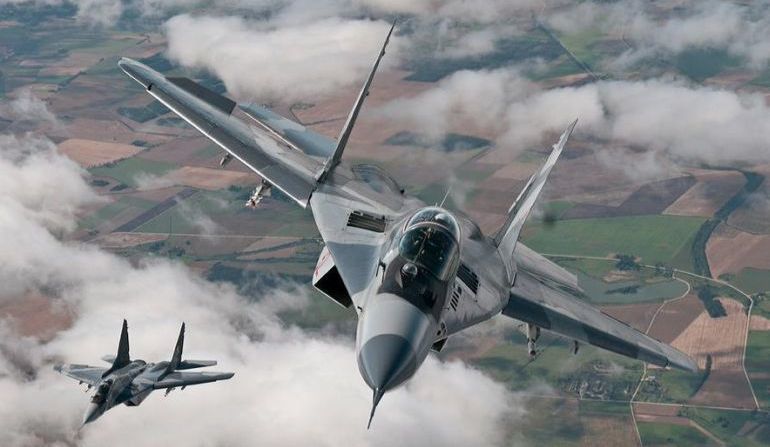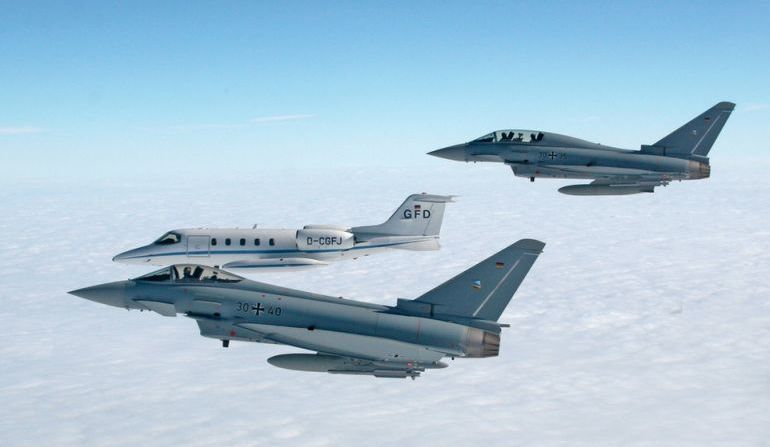Armed Forces
Will NATO Withdraw Its Aviation Assets From The Baltic Region? “Bad signal for Moscow”
NATO is going to withdraw part of the fighters that are being used within the scope of the Baltic Air Policing operation – as The Guardian reports. Reduced presence of the NATO air assets may be interpreted by the Russians as a sign of weakness which could, potentially, drive Moscow towards more aggressive actions directed against the Baltic republics.
According to The Guardian, NATO is going to limit down the number of fighters that are being used to protect Latvia, Lithuania and Estonia, from sixteen to eight – which constitutes a 50% cut. This probably means that the allied fighter component would not maintain its presence at the Polish Malbork AB in a permanent manner. Moreover, a smaller quantity of the NATO fighters would remain deployed in Lithuania.
In the light of the Ukrainian crisis, NATO decided to double the number of the fighters stationed at the Šiauliai Air Base in Lithuania (from 4 up to 8) and to add complementary deployments (of at least 4 fighters each) at the Estonian Amari and at the Polish Malbork airbases. The operation involved deployments from four NATO member states in total. Throughout the recent period, the jets were scrambled multiple times in order to intercept the Russian aircraft over the Baltic Sea, including large formations, also those including the Tu-22M3 Backfire-C or Tu-95MS Bear strategic bombers.
On 3rd August the Malbork base was left by the Belgian F-16 fighters which maintained their presence there since January, taking part in Baltops or Noble Jump exercises. Their departure is related to the airfield maintenance works. When it comes to the future rotations, Lt. Col. Marek Pietrzak from the communications department of the General Command of the Polish Armed Forces, provided Defence24.pl with the following statement: “So far – we have not received any confirmation”. As it had been indicated in the past, the Malbork operations were probably not going to have a permanent character.
Moreover, back in December this year, IHS Jane’s informed, quoting the commander of the Amari Air Base, that the rotational presence in Estonia would be continued throughout the whole year. Probably, the cuts would have an impact – above all – on the Lithuanian base, where a “standard” single country deployment is going to maintain its presence. Secondly, the reductions will also be applied in case of the Malbork airbase.
The decisions, according to which the number of the jets serving during the Baltic Air Policing operation is reduced, may have an impact on reduced level of security in the Mid-Eastern European Region. It may be interpreted by Moscow as a signal of “withdrawal”, which would send a message that NATO is no longer reinforcing its Eastern flank, even though the scope of operation would be larger, than it had been before the Ukrainian crisis broke out.

It shall be noted that we do not mean the direct threat here, particularly when one considers a full-scale crisis. In such situation the Estonian or Lithuanian bases would be very prone to an intensified attack, thus limitation or even a complete withdrawal of the deployments should be considered, however, permanent air policing operations shall be maintained, with the fighters taking off from the other countries in the region. It is worth to recall the fact that the permanent character of the operations would require a deep level of involvement, also in the quantitative dimension, even if the jets were not stationed within the territories of Lithuania or Estonia. Should a decision be made to maintain the presence of the forward deployments, significant reinforcement would be required, along with proper defensive measures, including air defence and anti-missile defence systems, coming from the NATO arsenal.
Decreasing the number of fighters limits the capabilities within the scope of reacting to the “subliminal” activities, such as the cases of intrusion into the protected airspace. Lt. Col Jay Janzen from the NATO European Command press services, quoted by The Guardian, stated that the deployment would be properly prepared to execute its tasks (i.e. to react to the Russian Air Force’s operations close to the NATO borders). Even if the NATO forces would indeed be capable of preventing the airspace intrusion, quantitative reduction of the presence may be interpreted as a bad political signal for Moscow. This move could encourage the Russians to continue their aggressive activities.

Bolstered Baltic Air Policing operation constituted an element of the NATO Eastern Flank Reinforcement measures, implemented in line with the provisions of the NATO Newport Summit. However, the measures undertaken by NATO have been of a limited character – first of all, no decision regarding increased military presence in the Mid-Easter Europe has been made, despite the requests made by the countries of the region. This creates a division in NATO, creating some “second-category” member states.
The basis for this type of actions, endorsed e.g. by the Germans, is present in the memorandum signed by NATO and Russia, where NATO is obliged to refrain from permanent deployment of significant forces in the “current and predictable security environment”. Moscow, by carrying out the annexation of the Crimean Peninsula and by sending its forces into the Donbass area, broke the provisions above, however the NATO member states are still acting in line with the above-mentioned memorandum.
The provisions of the Newport still have some advantage, since a variety of the NATO member states is involved in the rotational presence, exercises or the Baltic Air Policing operation. In the light of the above, the level of security reached thanks to the above activities is nowhere near the one provided by permanent bases, however the operations executed in the Mid-Eastern Europe contributed to the fact that NATO presence in the region was marked – and here, not only do we mean the United States of America, but also other European member states.

By reducing the scope within which the Baltic Air Policing operation is executed, NATO member states may – contrary to their intentions – send a sign of weakness to Moscow, since the insignificant operation would be reduced even more. On the other hand Moscow does not stop its activities that contributed to reinforcement of the NATO’s eastern flank (annexation of the Crimean Peninsula, Russian military presence in Ukraine, breaches of the disarmament treaties). Flights of large formations of the military aircraft close to the borders of the Baltic states are being continued.
It is worth noting that NATO air assets are also present in the Middle East, in the operations against the ISIS organization. The operations are carried out, besides the United States Air Force, by the Air Forces of France, Great Britain, Denmark, the Netherlands or Canada. Belgium was also involved in the NATO initiatives in the Middle East. All of the above-listed nations also took part in the Baltic Air Policing operation.
Thus, we may risk a statement that the ISIS burden imposed on the NATO aviation assets might, have had an impact on the NATO decisions. Potential difficulties in maintaining a permanent presence of a single fighter squadron within the threatened area may be interpreted as a sign of limited capabilities possessed by the NATO air forces. However, there is no doubt that budgetary and structural cuts also have had a largely negative impact on the capabilities of the NATO air component, within the recent period.
Limited scope of the Baltic Air Policing operation may mean that Russia receives a negative signal which could be interpreted as a lack of determination within the scope of maintaining increased NATO presence in the Baltic republics. This could be acceptable, should other defensive measures be implemented, meaning the measures that were not defined by the Newport summit, such as permanent presence of a single squadron of the NATO fighters at one of the Polish Air Bases (which would not necessarily be connected with the Baltic Air Policing operation). However, in the current context, the NATO actions may be interpreted as a sign of weakened presence of NATO in Mid-Eastern Europe. And we should remember that this presence had been already diminished by the Western interpretation of the NATO-Russia agreement from 1997, regarding the European presence of the NATO forces in the region.

